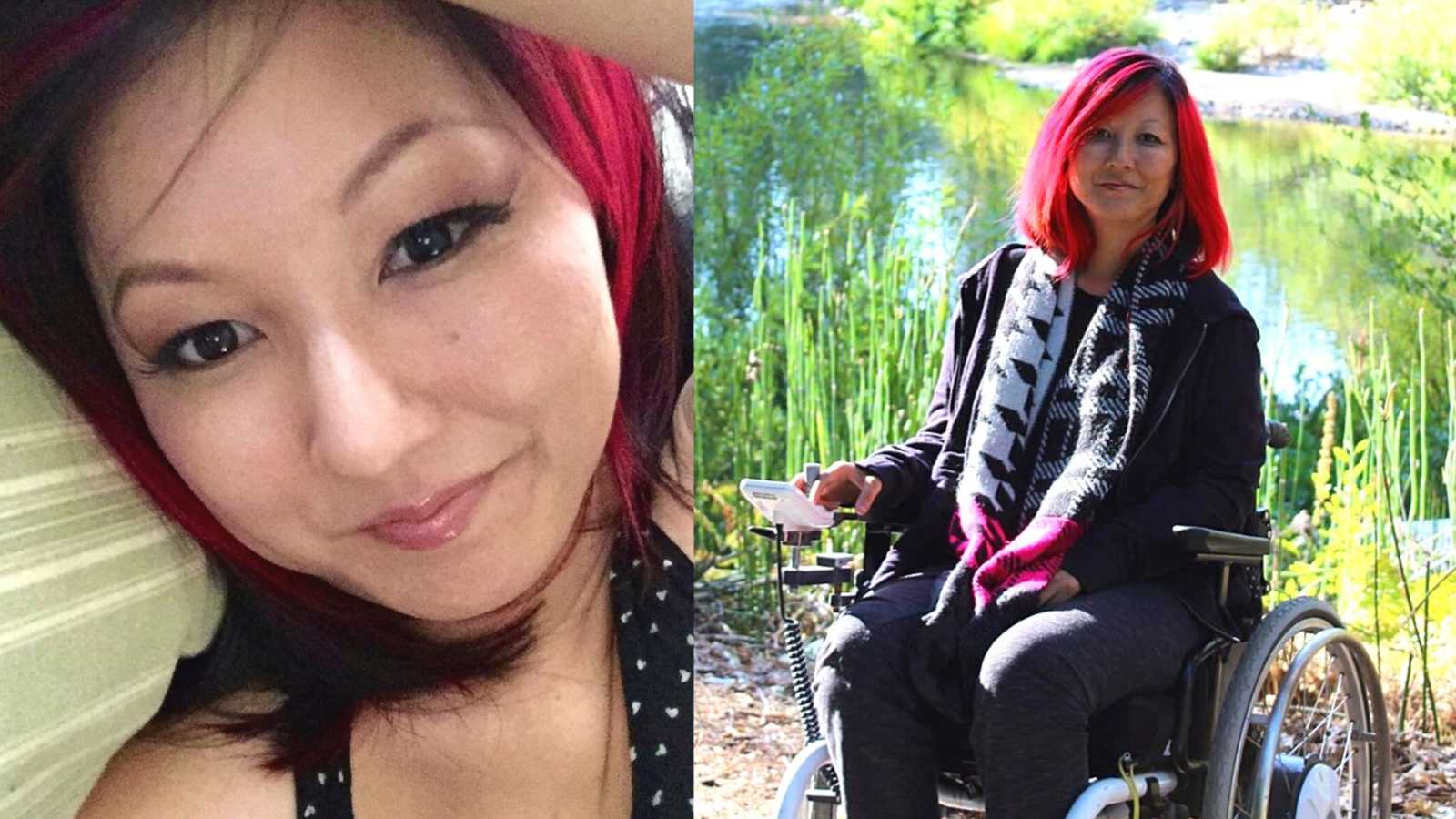“My life began in April of 1979, in a small maternity clinic in Daegu, South Korea. I’m adopted and was abandoned at birth by my mother, or so my adoption papers say. I have often wondered what our final moments were like. Did she hold my tiny hands in hers as her fingers softly caressed mine, while gazing into my barely opened eyes? Did she have sadness, reluctance, or fear before she slipped out like the phantom shadow she has always been in my life?
Fast forward 20 years: My biological family finally came to me in tangible form through a genetic disease I’ve had since birth, but mysteriously only begins to physically manifest in ones 20s and 30s. After a quintessential mid-western upbringing filled with baseball and soccer games, neighborhood bike parades, grandma’s house nestled in Michigan farmlands, and many frequent gatherings with our very large extended family, my life would completely change.
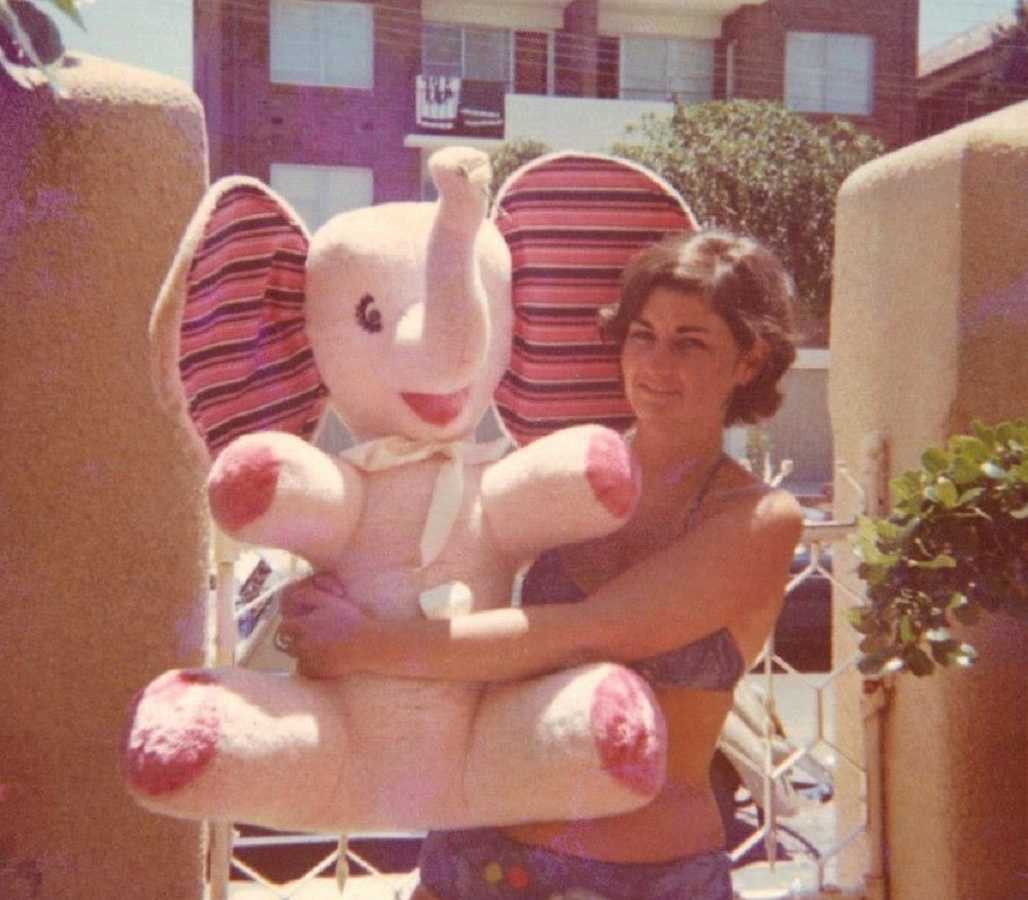
As a high school graduate entering the world of collegiate independence, my status was now a mysterious disease encroaching on my life. This mystery would take years to diagnose and came in multiple names before correctly diagnosed. The name? Hereditary Inclusion Body Myopathy (HIBM), today known as GNE Myopathy. I remember researching it in the basement of the University of Michigan.
Reading the whole prognosis sounded alien, and while intellectually I knew what quadriplegia meant, I couldn’t fully experience or understand until the milestones began rolling out. They were just words, but the slow burn of the progression only truly gave light to the situation. I’m constantly experiencing stages of loss every year, whereas if you become disabled from an accident, your reality is given to you instantly on a platter. Mine is dished out slowly over time…
HIBM is a progressive and very rare, debilitating muscle-wasting disorder caused by a genetic defect occurring in approximately 1,000 to 2,000 people worldwide. My disease fits in the category of rare diseases. I have the second most commonly affected mutation, the Japanese mutation. Though rare, it affects a wide range of ethnic backgrounds, but is most predominately present in the Jewish-Persian community.
The prognosis? While progression is slow and works at different paces for every patient, the most common end result is complete immobility. Some patients are left with only the use of their eyes and voice. Today, I am technically a quadriplegic. But thankfully, I still have limited use of my arms, hands, fingers, neck, and torso.
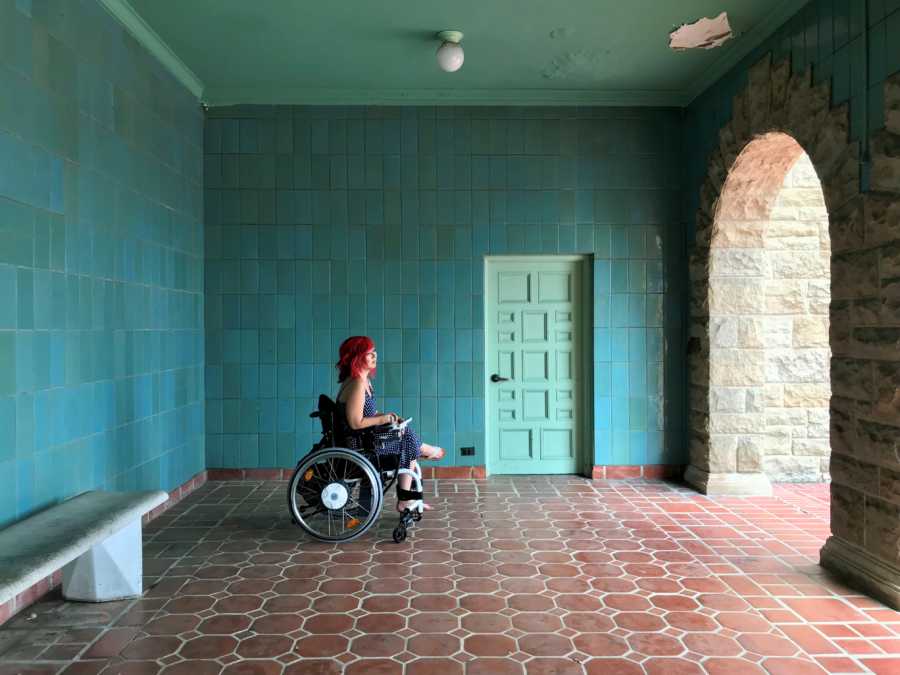
After receiving my fifth and final diagnosis, my specialist shockingly prescribed me a life of low expectations, telling me, ‘You should quit college and live a less ambitious life. Like a desk job. Be a secretary. You will never meet another patient nor see research being done because you’re too rare.’
I defiantly did not take his unprofessional opinion and somehow, endured college and magically graduated from a physically demanding major as an Automotive and Industrial Designer. Despite this ‘you have no future’ premonition.
I have lived among the Detroit skyline, the bustling windy city of downtown Chicago, the beautiful San Francisco Bay, and Los Angeles, where people flock searching to fulfill their Hollywood dreams. I have worked in many aspects of the design industry and been fortunate to gather various perspectives.
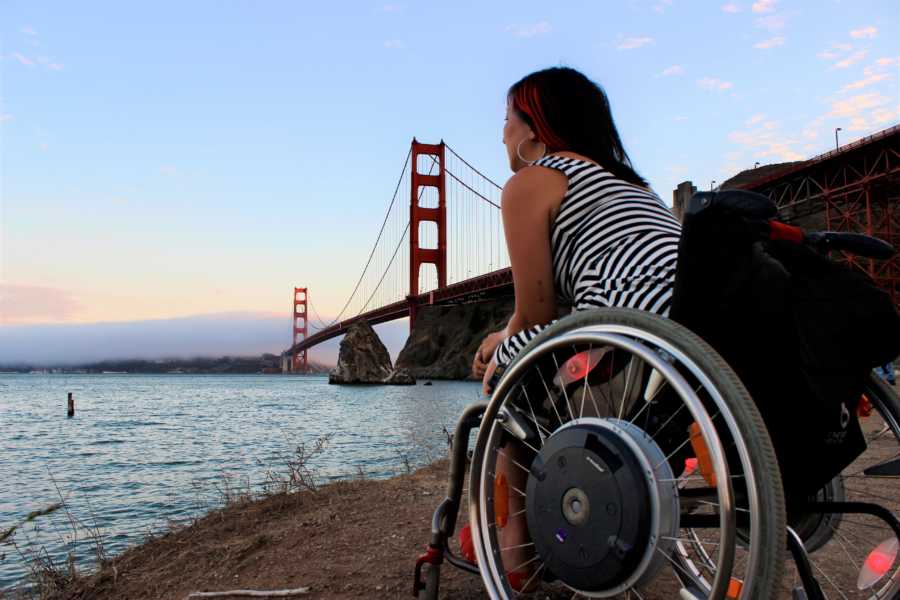
In the twenty years with this disease, I had to learn the ways of this new body and once again was someone who just didn’t seem to quite fit in. My body felt like it was slowly dying but in time I learned to live employing the use of canes, leg braces, and now a permanent powered wheelchair named ‘Johnny 5.’
Since, I have sailed along the Pacific Coast Highway in a 500 mile cross country bike ride from San Francisco to Los Angeles with my rag tag friends for a grassroots fundraising and awareness campaign, ‘Bike for Kam,’ I created for my disease.
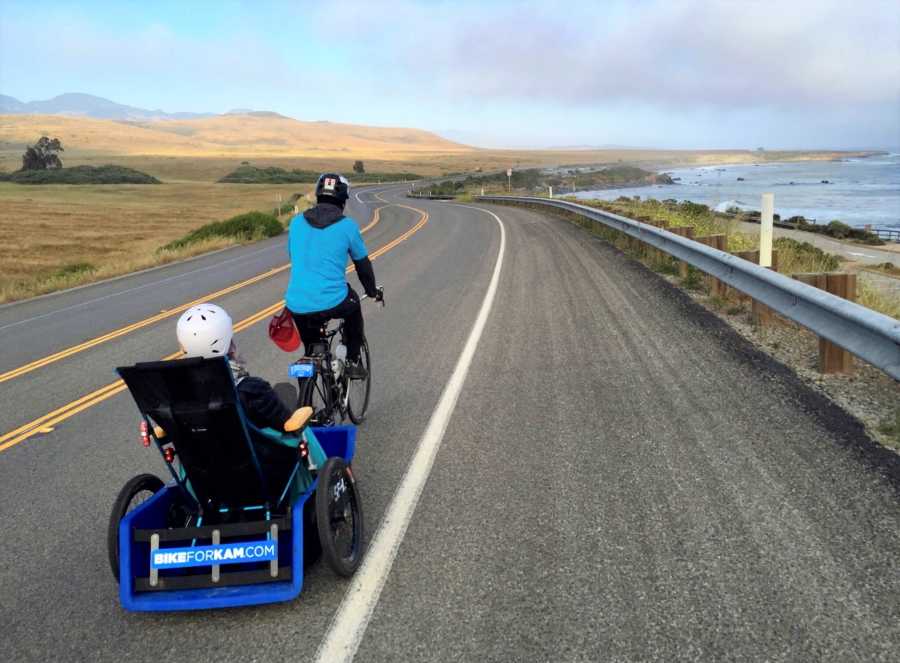
I have traveled around the world and have endless road trips clocked through hills, valleys, deserts and ocean side. I have sought to discover more secret and unchartered spots, like isolated art installations in the middle of the desert. I feel lost at home there.
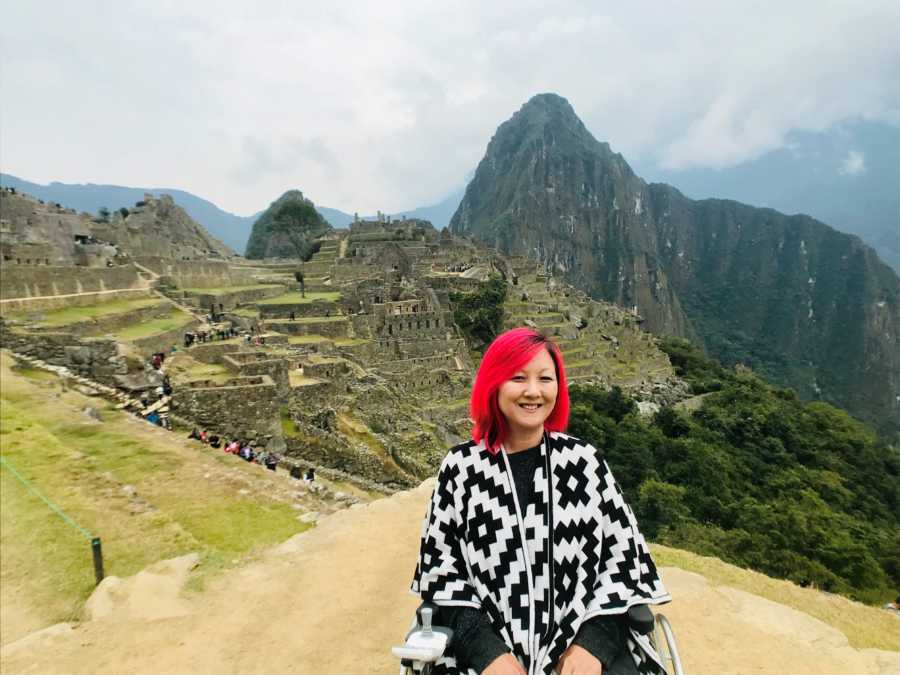
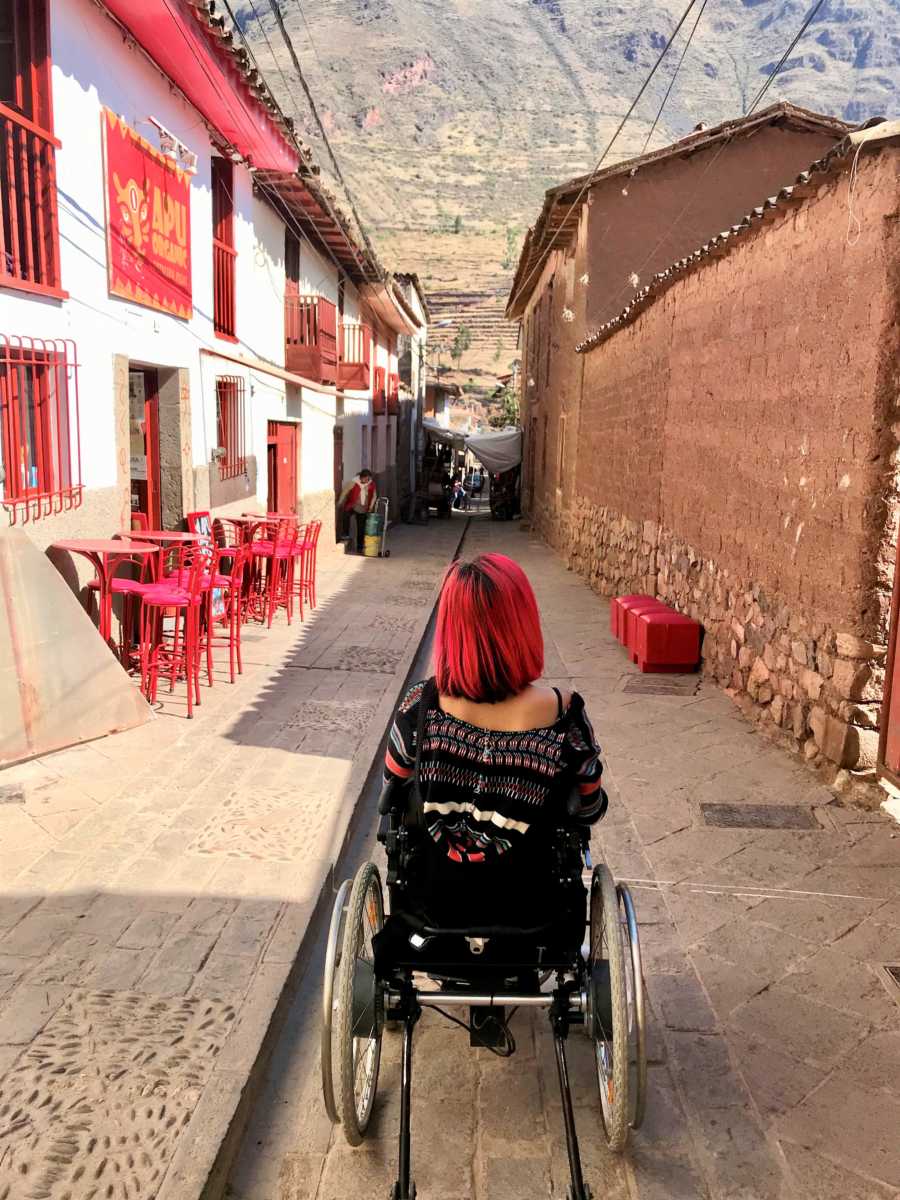
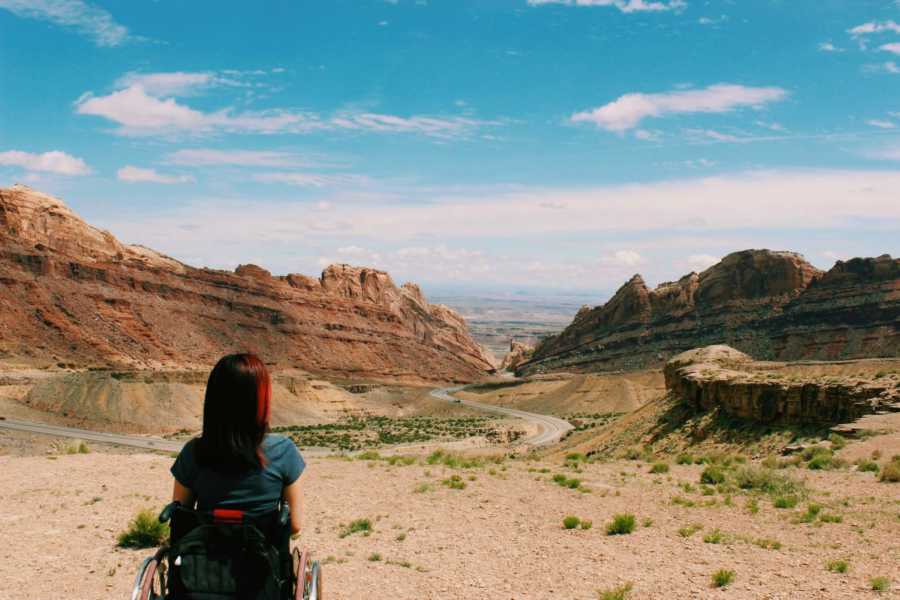
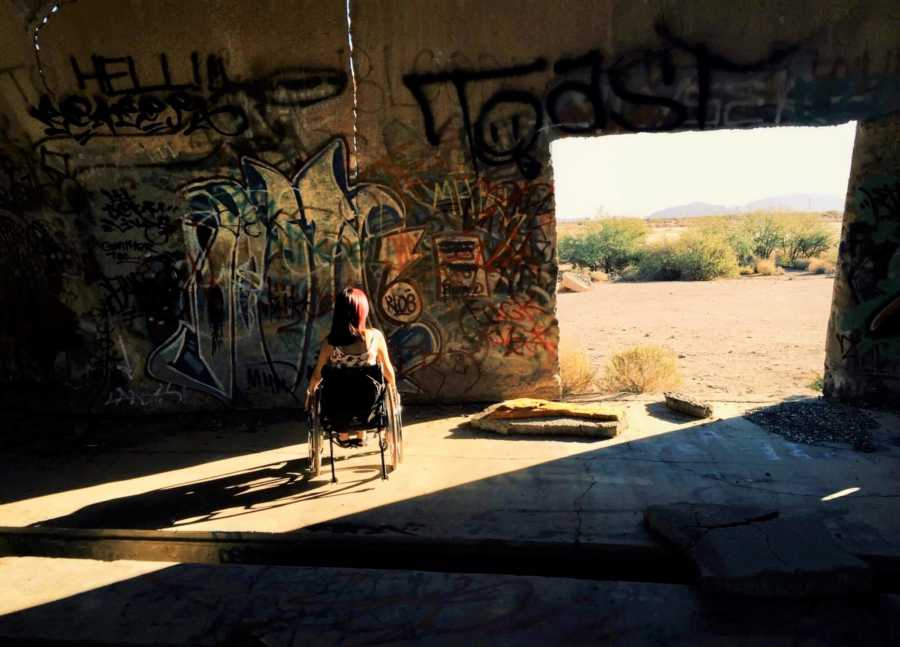
I have lived against my fears as I skydived, para-sailed, and scuba-dived in the Great Barrier Reef. I have traveled back to my birth country twice, and even journeyed to my orphanages and met my foster mom. I got married.
I met my husband at Detroit’s College for Creative Studies, where we both studied as designers and artists. He was in the friend zone for seven years until I moved to California to look for a job, and he happened to already be there. Through those years of friendship, he knew of my disease. Today, he recalls the moment he first met me on campus saying, ‘I sensed something was different, but I didn’t care because you already felt like home to me.’
While both artists, we held different perspectives. But in the thirteen years we’ve been together, perspectives have merged and we have changed. Self-admittedly, Jason was never a seeker nor an explorer. But with so many trips and adventures under our belt, he now says, ‘I appreciate the perspective you’ve shown me in not taking life for granted. I would’ve never adventured like this without you pushing me to live.’
I have said ‘yes’ to so much. I have walked and sometimes rolled the path of life. I have lived. I have lived my life with fear but without letting it bind and control me up against a silently ticking clock.
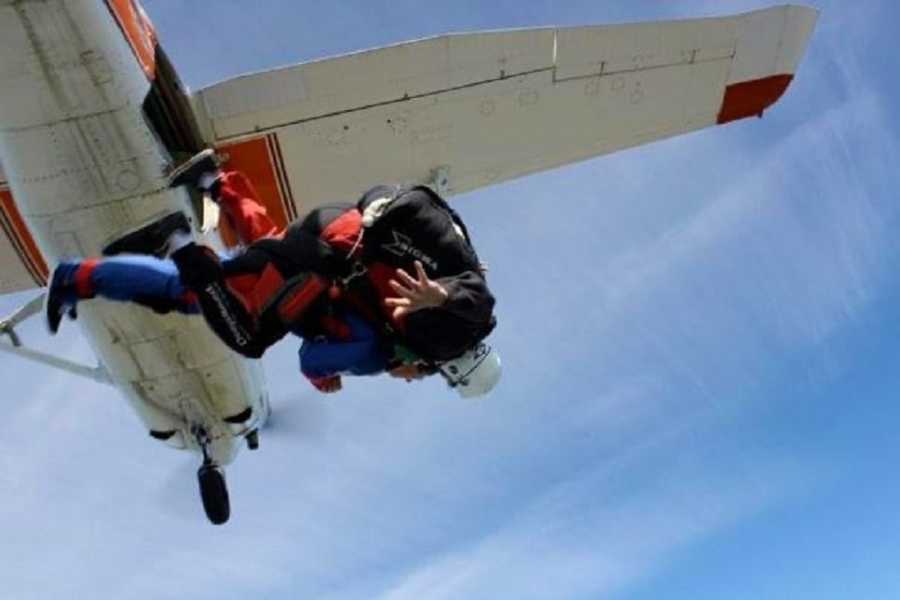
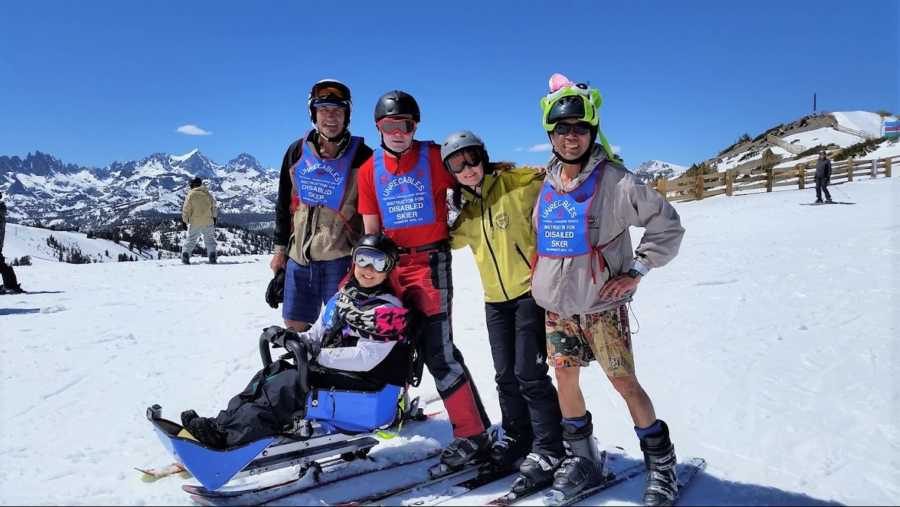
After many years of being involved with a nonprofit dedicated to trying to find treatment for my rare disease, I realized people don’t respond to textbook definitions and medical jargon. After all, the general public is bombarded by names of diseases and illness all the time. As a sentient being, I knew people needed to make a connection if they were to truly care. So, in 2010, I started a blog and began publicly sharing my most intimate thoughts and struggles. In 2011, I became a self-taught illustrator so I could visually contemplate and emote my experience, figuring people respond to stories in different ways.
Fast forward another 20 years: I am here writing this, reflecting on the last twenty years, or moreover my entire life.

I think when you have a disability or illness the humility pushed upon you is unexplainable. Your reality is suddenly one colossal bang reminding you how little control you really have. This is one of the greatest lessons and common themes in my writing: loss of control. How does one deal when faced with their illusions breaking apart?
If you can accept uncertainty is the only certainty, then you can truly enjoy life while rearranging priorities to what is most important. If we can truly understand this fleeting life and how little time we have to take it for granted, while accepting this bittersweet natural order, we can find beauty in the temporary.
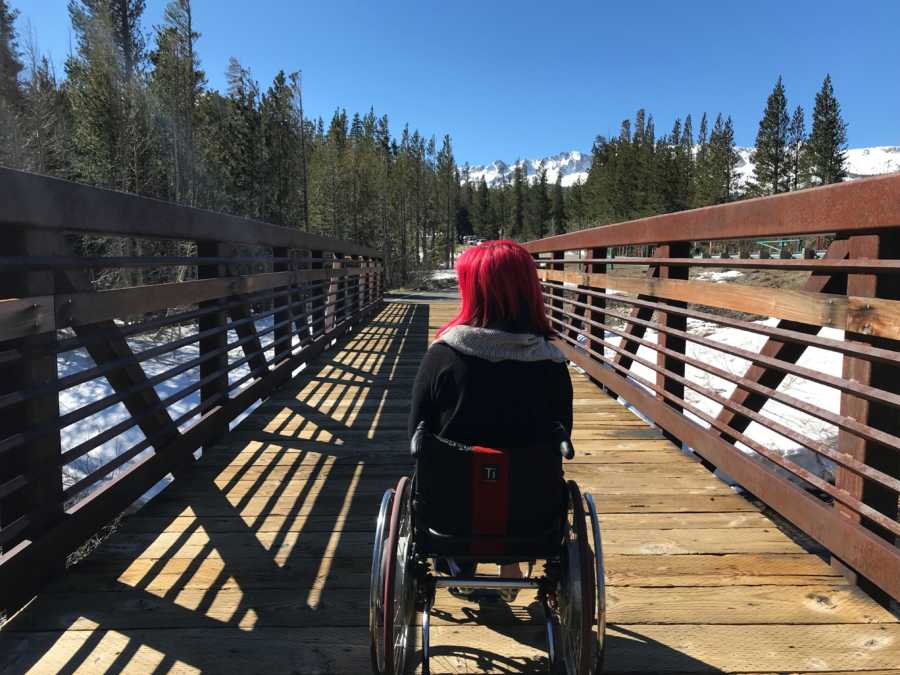
I’ve always admired artists who create temporary work. I remember in college learning about Andy Goldsworthy, an installation artist in nature, who utilizes found natural objects to achieve beautiful masterpieces that would eventually be destroyed by nature. I found this representation of impermanence particularly fascinating.
If you know artists, many times we tie a lot of ourselves to our work and identity. We relish it with natural ego and hold these precious relics as permanent fixtures of ourselves. But artists who can create to merely destroy it moments later is very unusual, and yet so honest for nothing lives forever, does it?
Everything is temporary. My body is temporary. My life is temporary. We are born. We live. We die. An unending cycle we must all travel. This is life in all its unfairness and injustice. But we don’t have to be afraid of the temporary, we can use it to push us forward into uncomfortable territory.
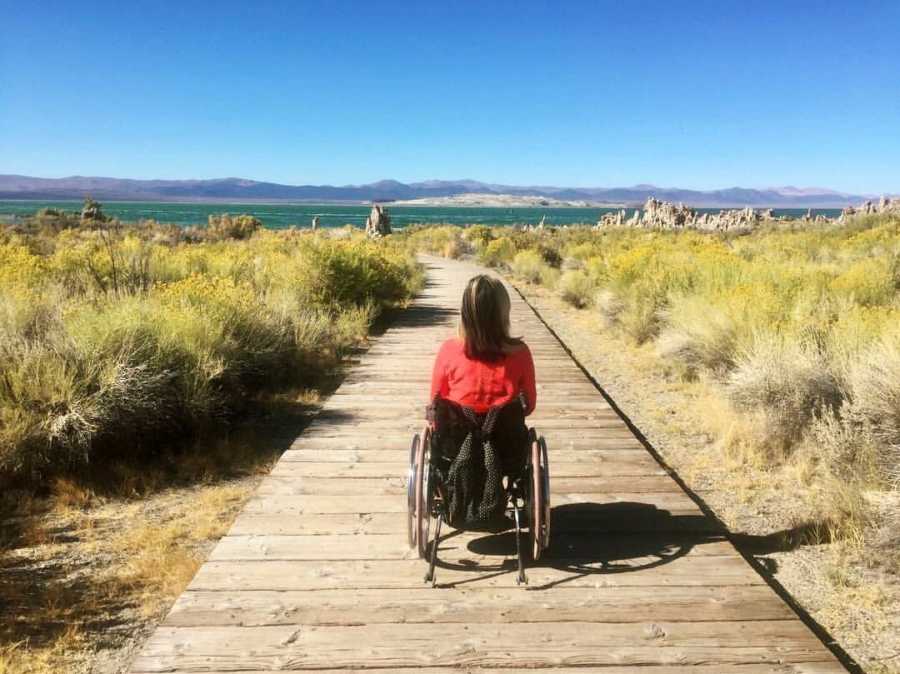
For most of us the unknown is uncomfortable. The unknown can be scary. But the unknowns are also an adventure, and with adventure we have to accept there are good roads and there are bad. It’s a package deal. A cruel brutality hidden inside a beautiful gem.
Understanding that my body is temporary has caused me to truly live.
Last summer, I found out a patient died from the effects of this horrible muscle-wasting disease. Finding out there is a sliver of a chance this disease could be fatal was a final plunge to the heart. This has switched that silent ticking clock to a louder alarm. Life is a scoundrel. It can chew you up and swallow you whole.
I live with a deteriorating body every single minute, hour, day, year. There can be sadness and loneliness in feeling the world moves on as I sit here embroiled in the most tangible temporary. But there is also a peace in knowing I’m just a part of a cosmic cycle.
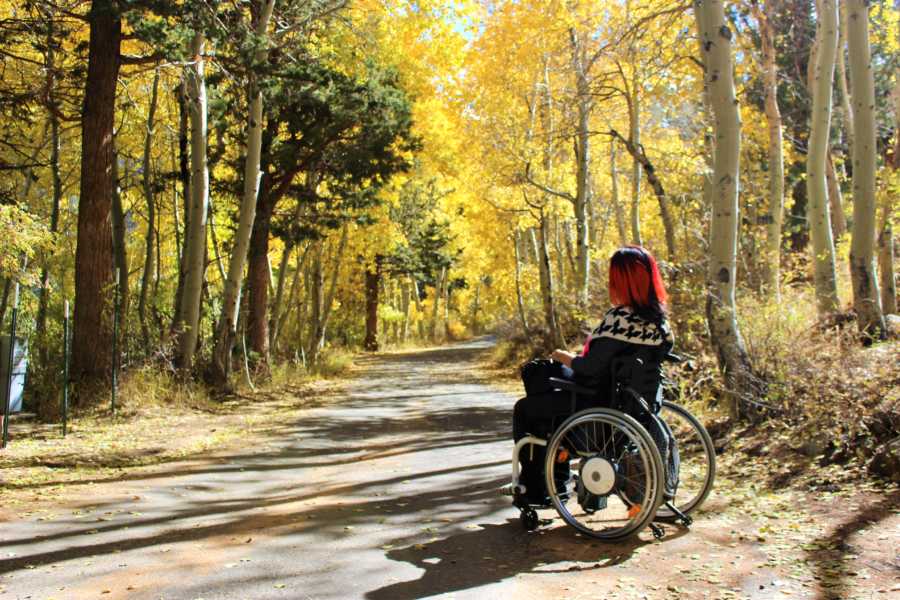
Like nature, there are ebbs and flows. When I’m in love with life, I’m really in love. When I’m in grief, it’s like a loss I’ve never felt before. When I’m in fear, it’s a fear unlike any dare devil adventure out there. Some days I feel like I can conquer the world. Other days I feel like I’m completely destroyed with no chance of survival in sight. But in the amber of a moment, time stands still, and I can deeply feel the beauty and viciousness in one isolated snapshot.
To me, mortality is not taboo or something I am privileged to easily escape like most can and do. I know intimately this brutal experiment that is life. But to me, the conversation has transcended beyond this fear and is more about living. Living in the moment with resilience and great passion. It’s about coming to terms with the joy and sadness that is life; in all its comedy and tragedy, in all its beautiful, wonder-filled mysteries. And survival depends on the elasticity of our bend.
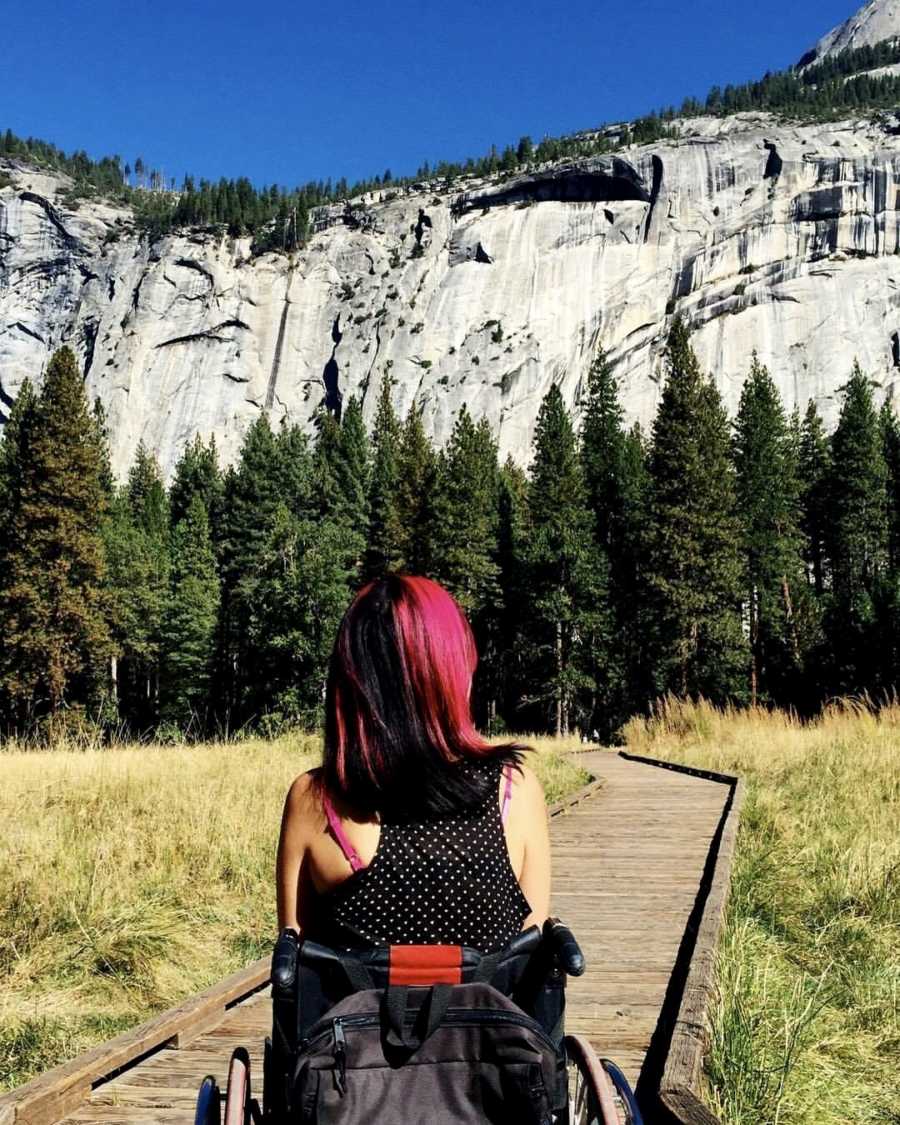
The body is temporary, a mere vessel that carries us around. But the human condition is eternal and long-lasting. I’ve experienced heartbreak, endless grief, and infinite perspective. In that perspective I’ve found joy and purpose.
In spite of everything, I have many dreams, plans, and projects in the work — including a children’s book inspired by my rare disease, struggle, and acceptance — and other creative projects that celebrate and elevate disability and inclusion.
We can live life taking chances, or we can live it safely, never challenging ourselves. What keeps me tethered to this world is the fear of not living enough, not knowing enough. This overrides so many of the other fears I have. I’ve already lost so much; I have nothing else to lose. The only thing I have control of is not taking this life for granted. In all its difficulty life does go on. We go on. And it will go on without us or we can join it.
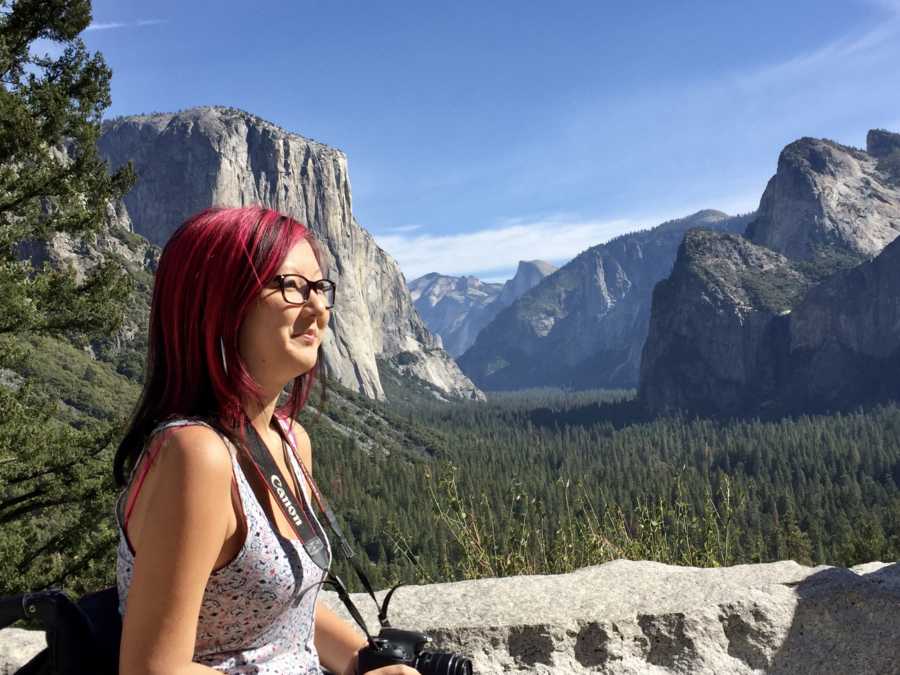
Society focuses on the external because it’s a quick read. We like to quickly place people in boxes and groups; how we look, what is our job, how much we produce, how successful we are, and what my body does or doesn’t do, with little nuance allowed. The internal secondary. But when the physical suddenly dissipates, we aren’t able to handle it. It is foreign, as we’ve spent our whole life only building up external factors. Strive to be outside the normal. Don’t allow yourself to be simplified. The spectrum is vast, and it’s ok to be unique and outside of the mainstream’s eye.
There is a common love and reason that streams through all of us, and in the opposite spectrum exists common grief and sorrow. This is how we are more alike than different. If we only saw this before it’s too late. If only we saw how similar we are, rather than different. If we only felt our neighbor and their differences dissipate into the free flowing air. We all have joy, pain, and sorrow. We are the same.
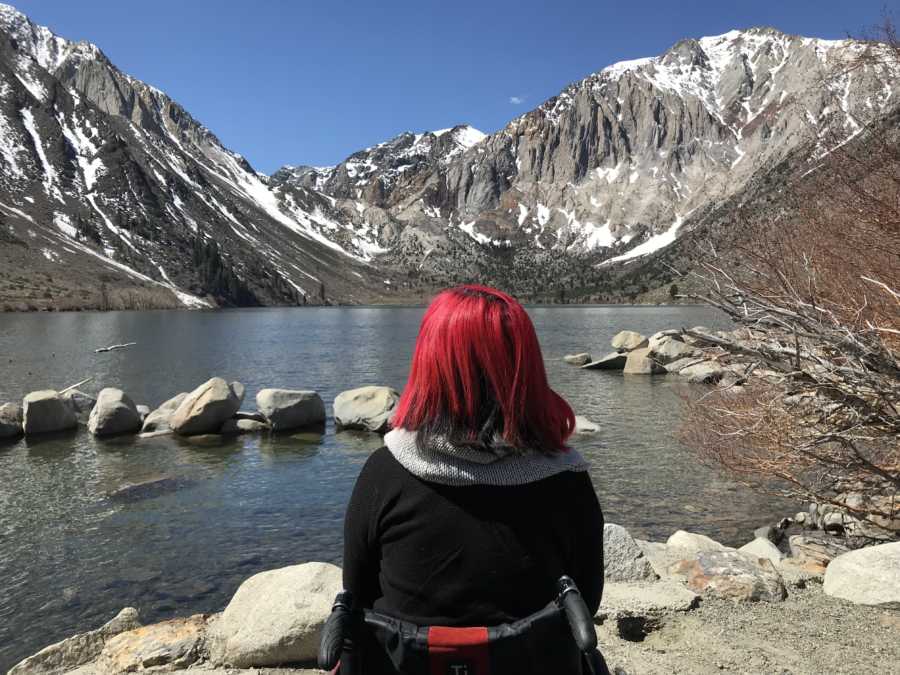
The end is bittersweet, whether it is represented through my body’s physical state or the end of our soul. I seek solace in the natural order of life and no different nor more important. But what can give us comfort is knowing we passed through time having never wavered on our dreams.
Through my nontraditional life and its sequence of of events, I feel privileged to have experienced the spectrum of the human condition and experience. I’m in constant rhythmical flux.
Slow down. Reflect. It’s not all about work or climbing the ladder. If you asked most people at the end of their life, acquiring more material or becoming CEO’s isn’t what they wished they would’ve focused their time on. They most always wished they would have lived more. So live. Live being afraid of an unlived life.”
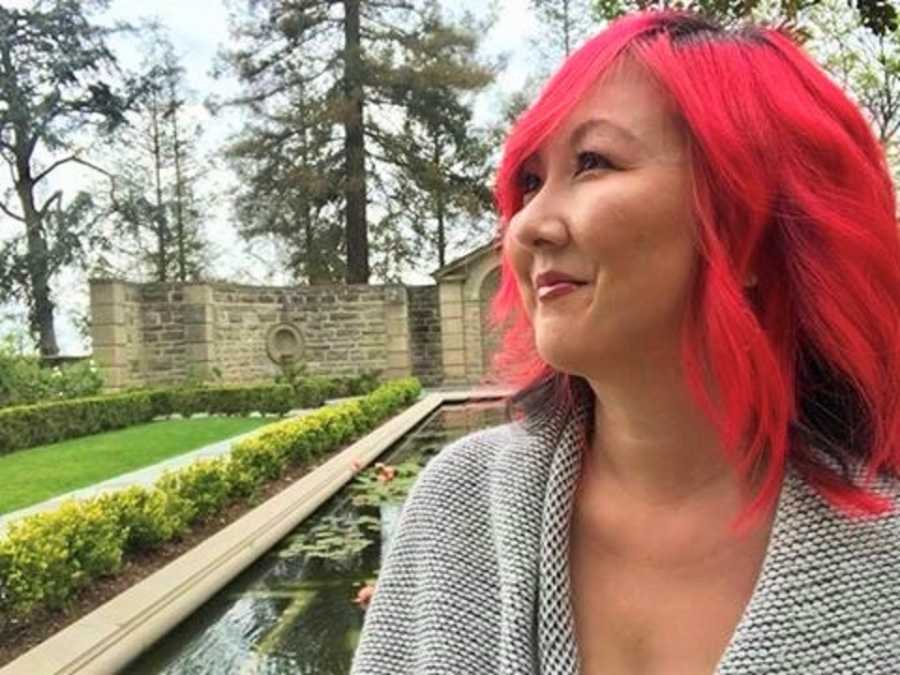
This story was submitted to Love What Matters by Kam Redlawsk. You can follow Kam’s journey on Instagram, Facebook, or her website. Do you have a similar experience? We’d like to hear your important journey. Submit your own story here. Be sure to subscribe to our free email newsletter for our best stories, and YouTube for our best videos.
Read more stories like this:
SHARE this story on Facebook to encourage others to cherish every moment and love what matters most.

